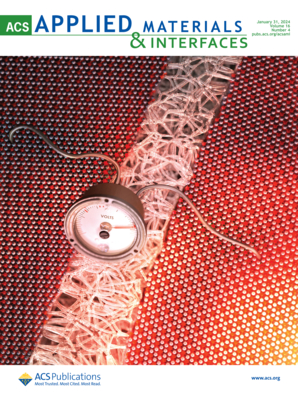A new model to estimate shallow lake nitrogen removal rate based on satellite derived variables
IF 8.3
2区 材料科学
Q1 MATERIALS SCIENCE, MULTIDISCIPLINARY
引用次数: 0
Abstract
Lake nitrogen (N) removal, mainly resulting from bacterial denitrification that converts nitrate (NO3 −) to gaseous N (N2), is important for lake water quality and eutrophication control. However, quantifying lake N removal is challenging due to the high background atmosphere N2 concentration and the heavy burden of field surveys, leading to a decoupling of watershed N management and water quality improvement. Here, we developed and validated an innovative nonlinear model for lake N removal rate estimation by linking the N removal rates with remote sensing-derived variables (chlorophyll-a, chromophoric dissolved organic matter, and lake surface water temperature). The model was validated in shallow eutrophic Lake Taihu in the Yangtze River basin and at the global scale. Based on the new N removal model, we estimated that an annual average of 3.21 × 104 t N yr‒1 was removed in Lake Taihu from 2011 to 2020, accounting for 53−66% of the total lake N loading. The remaining N loading after denitrification removal in Lake Taihu would be approximately 2.37 mg N L‒1, and 0.79 × 104 t N y‒1 of lake N loading still needs to be removed to meet the target of class IV water quality (1.5 mg N L‒1). This is the first study linking lake N removal in sediment microcosm incubations with reach-scale remote sensing derived variables, providing timely-much insights into lake N removal. This approach can be easily applied in other lakes with satellite derived data, to better understand lake N budget, drivers of eutrophication control, and watershed N management.基于卫星衍生变量的浅水湖泊脱氮率估算新模型
湖泊脱氮(主要是细菌反硝化作用将硝酸盐(NO3-)转化为气态氮(N2))对湖泊水质和富营养化控制非常重要。然而,由于大气中 N2 的背景浓度较高,且实地调查负担沉重,因此量化湖泊 N 去除量具有挑战性,导致流域 N 管理与水质改善脱钩。在此,我们开发并验证了一种创新的非线性湖泊氮去除率估算模型,该模型将氮去除率与遥感变量(叶绿素-a、色度溶解有机物和湖泊表层水温)联系起来。该模型在长江流域的浅富营养化太湖和全球尺度上进行了验证。根据新的氮去除模型,我们估计从 2011 年到 2020 年,太湖年均去除 3.21 × 104 吨氮,占湖泊总氮负荷的 53-66%。反硝化去除后,太湖剩余氮负荷约为 2.37 mg N L-1,要达到 IV 类水质目标(1.5 mg N L-1),还需去除 0.79 × 104 t N y-1。这是首次将沉积物小宇宙培养中的湖泊氮去除与到达尺度遥感衍生变量联系起来的研究,为湖泊氮去除提供了及时的见解。这种方法可以很容易地应用于其他具有卫星衍生数据的湖泊,以更好地了解湖泊氮预算、富营养化控制的驱动因素以及流域氮管理。
本文章由计算机程序翻译,如有差异,请以英文原文为准。
求助全文
约1分钟内获得全文
求助全文
来源期刊

ACS Applied Materials & Interfaces
工程技术-材料科学:综合
CiteScore
16.00
自引率
6.30%
发文量
4978
审稿时长
1.8 months
期刊介绍:
ACS Applied Materials & Interfaces is a leading interdisciplinary journal that brings together chemists, engineers, physicists, and biologists to explore the development and utilization of newly-discovered materials and interfacial processes for specific applications. Our journal has experienced remarkable growth since its establishment in 2009, both in terms of the number of articles published and the impact of the research showcased. We are proud to foster a truly global community, with the majority of published articles originating from outside the United States, reflecting the rapid growth of applied research worldwide.
 求助内容:
求助内容: 应助结果提醒方式:
应助结果提醒方式:


